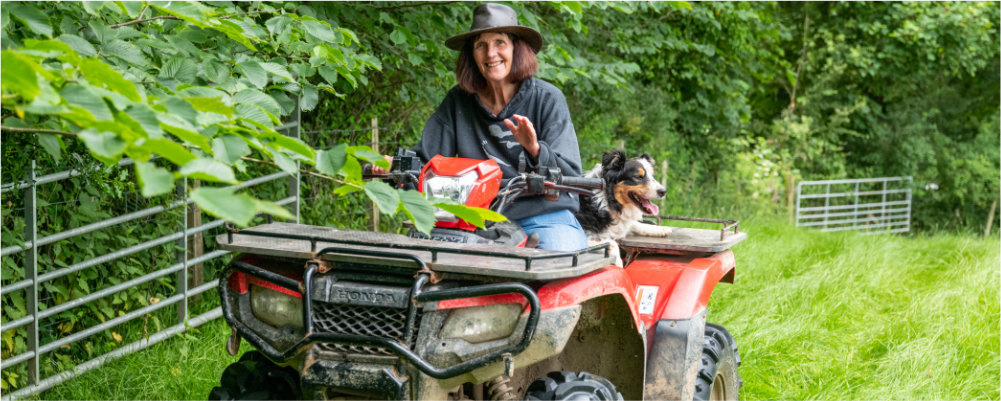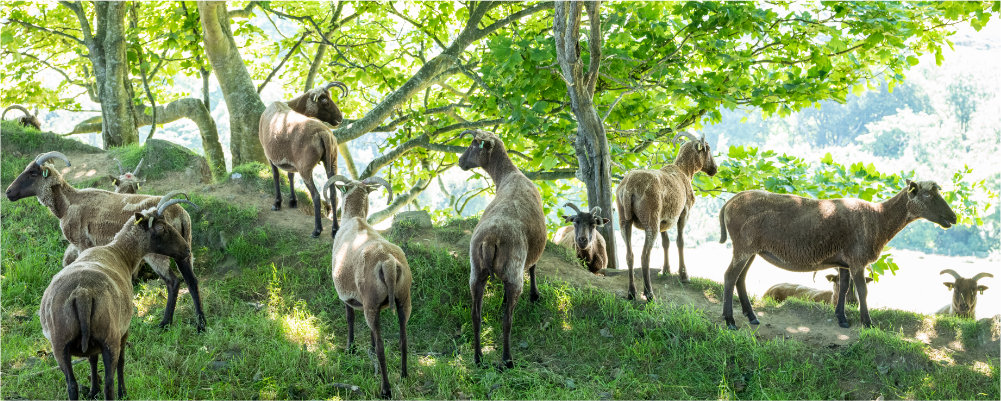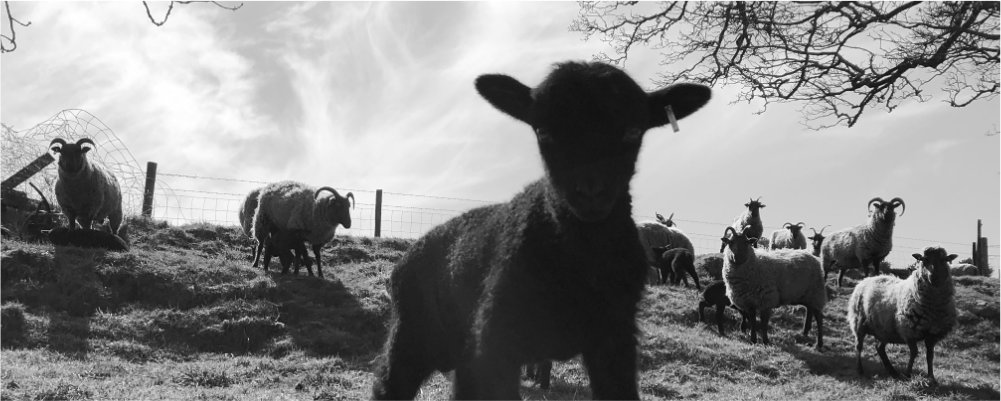Are you sure you want to perform this action?
Conservation and farming for nature
Here is a video on Facebook about our sustainable sheep
We are very happy that that the numbers of hares and certain bird species are increasing, we sometimes get a curlew nesting (or it chooses our neighbour), hedgehogs are hugely increased as I care for hedgehogs in the winter as part of the local Hedgehog rescue run by one amazing lady and the farm is a release site for those who can’t go back to where they were found.
We do encourage bees and are happy to see more bumblebees. Every year we have a number of swallows returning to nest and now all outbuildings have access points for them so they can never be shut in or out.
We have a few small areas on the farm that we leave completely wild, fallen trees are left, sheep do not graze there and we do not cut or intervene. They have become havens for insects and increasing numbers of smaller birds are choosing to nest there. We re-dug the pond high up in the farm that had become completely silted up, this not only has improved the drainage from the fields above but also is alive with dragon flies in the summer, often has visiting wild mallards and in dry weather is an important source of water for wildlife such as hedgehogs.
We took a decision several years ago that in any field cut for hay we leave a verge of 12–16 feet uncut at the edges, we do lose some bales of hay but the benefits to ground nesting birds such as pheasants and partridges and the hares was obvious within 2 years with increased numbers. We are also seeing more and more wildflowers in these verges. At the end of summer the sheep are allowed to graze them down after the birds and hares have finished breeding.
The very top of the farm, about 25 acres, was impossible to farm as the grass had become high course tussocks that even a quad bike couldn’t get through. There is a small sheltered deep ravine up there that was impassable and completely overgrown. 5 years ago we put a few hundred Manx Loaghtans up there in desperation and were stunned with the results. They really are superb at conservation grazing. The whole area is now passable on a quad bike, the high tussocks of grass have gone and within 2 years we started to get a curlew nesting up there. In the sheltered ravine there are so many other plant species including wild orchids beginning to appear. We now leave the area untouched through out most of the summer to encourage the curlew back and let the hares breed in peace. In late August we put the sheep up there to graze, they thrive on the mixed grazing.
We have farmed with nature for years and previously we lost farming subsidy on all our wild areas but in 2021 the Isle of Man Government has recognised we all need to help nature and introduced the Agri-Environment Scheme. Under the new scheme we had an assessmentby Manx Wildlife Trust who were delighted with what we have already.They were particularly happy with the large number of Meadow Pipits which are now on the red list of birds. We have plans to enlarge the existing pond, create another large pond and to enhance our woods byby planting more native species of trees. We will be creating a walk upto the ponds and wooded areas so visitors to our shop can also enjoy our beautiful farm.
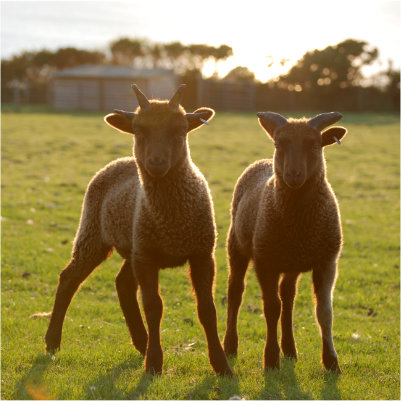
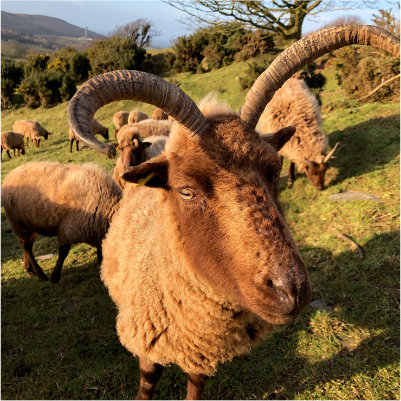
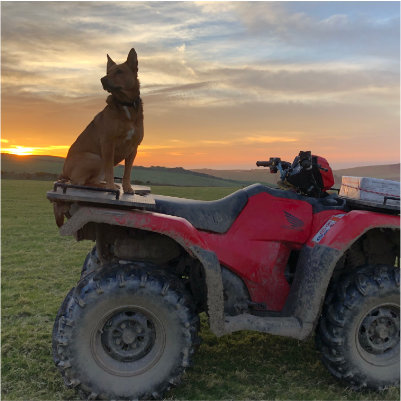
Ballacosnahan Flock
Ballacosnahan Farm is a 200 acre farm stretching from the top of Slieau Whallian down to the river Neb and has been in my family for nearly sixty years, it is where I grew up. It faces west and on a clear day you can see Northern Ireland, the Mountains of Mourne, the Mull of Galloway and the Ayrshire Hills. In my childhood there were no Loaghtans on the farm, only white sheep, some beef cattle and some pigs.
I moved back to the Isle of Man in 2003 to a cottage overlooking the sea with 5 acres of fields. A good friend gave me 6 Manx Loaghtan ewe lambs, as “you need something to mow the grass”. I had no idea then that I would become completely hooked on these sheep and end up today with a flock of about 900. I took over the farm in 2014
Today my partner and I farm together, we left the cottage 2 miles away and moved back to live on the farm. We have only Manx Loaghtans sheep, 40 completely free range hens and 3 dogs. I still know most of my ewes and rams individually and pride myself that my sheep have the highest level of husbandry and care. Although I am not registered as organic I do farm in an organic way.
Ballacosnahan Farm
We recently discovered our Loaghtans were not the first at Ballacosnahan Farm and in fact the Farm played a significant role in the Loaghtan story over a hundred years ago.
A few years ago, we found that the earliest photo of a Loaghtan in the Manx Museum was in 1924 of a ram belonging to JT Quirk of Ballacosnahan Farm. We then started to research Mr Quirk – it is quite hard to find out information as so little is written down.
A man called Caesar Bacon (1870 -1916) was one of the most important “heros” in the Loaghtan story. He realised that Loaghtans were disappearing and in the 1890s went around the Isle of Man gathering up the few that he could find. In his first year of breeding 1895 he had only 4 ewes that were young and fit enough to breed from and most of today’s Manx Loaghtans descend from Caesar Bacon’s 4 ewes.
We know from sale records that Mr Quirk bought 3 Manx Loaghtan ewes in 1903 (from Caesar Bacon) and in 1916 after Caesar Bacon’s death, “JT Quirk of Ballacosnahan, Patrick” was one of 3 buyers for Bacon’s flock of Manx Loaghtans and they came to Ballacosnahan. We also know that JT Quick won prizes for his Loaghtans at the Southern Agricultural show 1924 -1926.
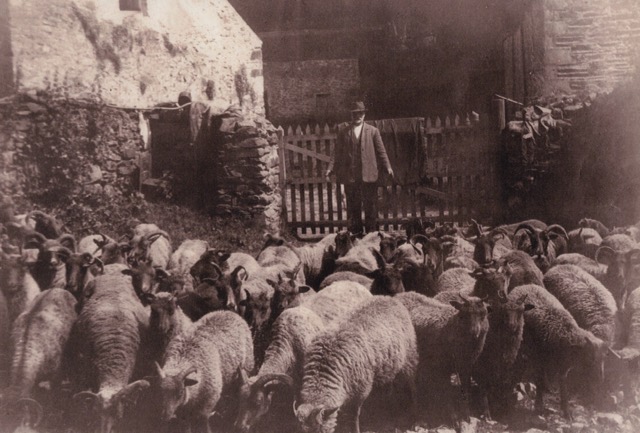
T J Quirk at Ballacosnahan Farm with his flock of Loaghtans 1920’s.
photo by kind permission of T J Quirk’s family
We were lucky enough to make contact with JT Quick’s granddaughter who gave us the wonderful photo of JT Quirk with his sheep at Ballacosnahan Farm taken in the 1920’s. The site of the photograph is largely unchanged today. To take that photo in the 1920s must have involved a huge amount of work and a professional photographer, Mr Quirk must have really loved his Manx Loaghtans and been very proud of them to go to so much effort.
His granddaughter said JT Quirk retired from farming and Ballacosnahan in about 1930 but is unsure what happened to his sheep. She gave us a photo of him wearing his Loaghtan suit again taken in the 1920s and she remembers he was very proud of his Loaghtan suit,
I hope JT Quick is smiling down on us that we have brought Manx Loaghtans back to Ballacosnahan.
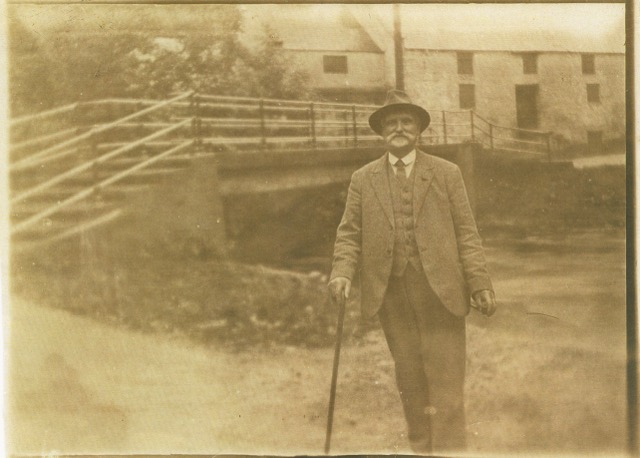
T J Quirk at Castle Rushen in his Loaghtan suit.
photo by kind permission of T J Quirk’s family
